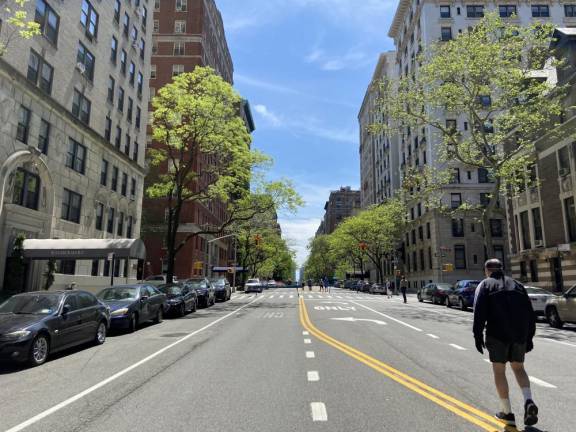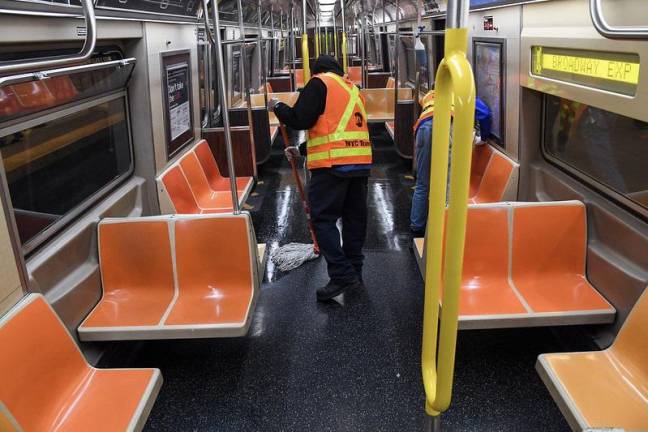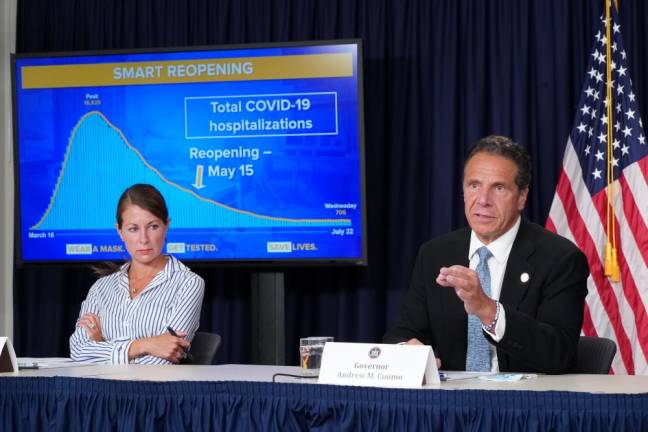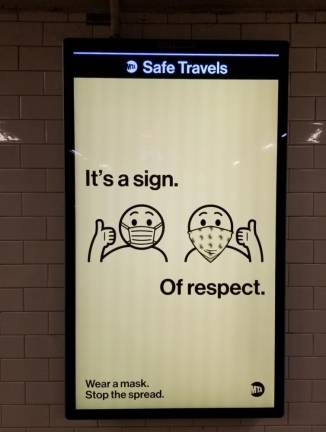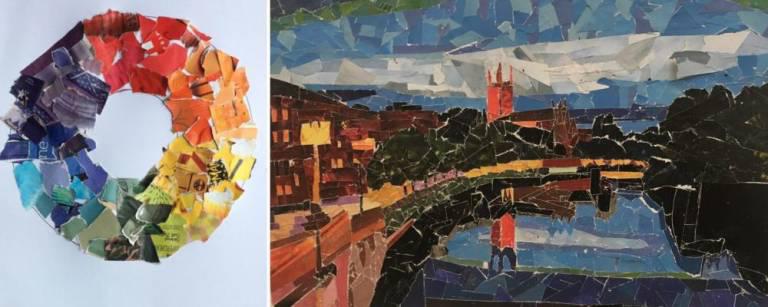1. Clean Subways: For the first time in its history, NYC’s subway system shut down at night for cleaning and disinfecting, from 1 a.m. to 5 a.m. NYCT’s acting president Sarah Feinberg and chief customer officer Sarah Meyer put a spotlight on the effort, and the result was undeniable: clean trains, social-distancing markers platforms and PPE in vending machines.
But thorough cleaning has not been enough to bring ridership - and MTA revenue - back to pre-pandemic levels. At one point, weekday subway ridership was down more from an average 5.5 million to 366,000. In early September, the Trump administration cut FEMA funds for cleaning supplies in NYC. Sen. Chuck Schumer told The Daily News: “This is a downright dirty plan just when we need to keep sanitizing and PPE a federal priority.”
2. Open Streets: By June, the Department of Transportation’s Open Streets program accounted for 67 miles of streets where cars were off-limits (of 100 miles that Mayor Bill de Blasio had promised). It was eventually connected to the Open Restaurants plan that allowed outdoor dining as part of reopening the city. Pedestrians and cylists have made good use of the open spaces. On West End Avenue from 87th to 96th Streets, residents can be seen walking, teaching kids how to ride bikes, or reading on beach chairs set up on the streets.
Open Streets yielded clear environmental benefits: in March, the New York Times reported that researchers at Columbia University saw emissions of carbon monoxide over New York City decline more than 50 percent below typical levels over the previous week — a change linked to the drop in car traffic across the city.
3. Telemedicine: As infections rose in March and April - and testing was in short supply - New Yorkers worried about leaving home for doctors’ offices and emergency rooms, where they risked infection. Audio-visual consults with doctors became an entry point for those concerned about coronavirus symptoms, and provided advice and assistance in the comfort of home.
“We went in mid-March from 20 video visits per day for Mount Sinai to 2,000 in a matter of 10 days,” Mount Sinai Heath endocrinologist Dr. Ronald Tamler told CBS2 in early April.
An article in the New England Journal of Medicine described telemedicine as “a 21st-century approach to forward triage that allows patients to be efficiently screened, is both patient-centered and conducive to self-quarantine, and it protects patients, clinicians, and the community from exposure.” Such programs, popular with city residents, seems likely to remain in practice for non-emergency situations.
Yet as critics note, telemedicine relies on good WiFi - an issue for lower-income New Yorkers who are more likely to be vulnerable to the virus and other public health problems.
4. Public Health Messaging: As NYC became the U.S. epicenter for COVID-19, New Yorkers came to rely on Gov. Andrew Cuomo’s daily coronavirus briefings. With charts, data, family anecdotes, criticism of federal policy and New York Tough encouragement, the governor’s noontime briefings were appointment viewing, cheered and retweeted on social media. June 19 was a bittersweet day: the governor’s last regular briefing, due to the decline in cases and infection rates.
But public messaging has retained an informative, can-do spirit on street corners and in the subways, urging New Yorkers to wear masks and providing information about city health services.
5. Adult Learning: Love it or hate it, Zoom has been the pathway for learning and connection for adults during the pandemic. Whether it’s a panel discussion about AIDS and COVID at Hunter College, a museum tour or a chance to reconnect with your inner artist, remote instruction has engaged New Yorkers during a difficult time.
To keep older New Yorkers fit, healthy and active, centers from the city’s Department for the Aging’s network have been offering virtual classes, including fitness programs, nutrition workshops and art classes. Greenwich House in the West Village offers a comedy workshop, creative writing, t’ai chi and chair yoga. New York City SAGE Centers offer virtual programs that include fitness, art and technology classes.
